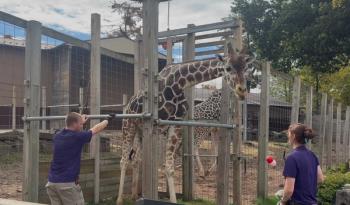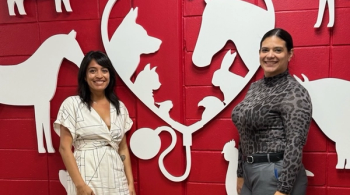
Raising the bar: Establishing standards of care (Part 1) (Proceedings)
Recognize the opportunities for raising the standard of medical care, improving patient quality of life, and enhancing the family-pet. Relationship
Irving Townsend - - "We who choose to surround ourselves with lives even more temporary than our own live within a fragile circle, easily and often breached. Yet, we still would live no other way."
Recent studies consistently report that 75 - 80% of pet owners think of their pets as children
Where dogs stand in the household:
• Member of the family - - 76%
• Dog is one of most important things in life - - 67%
• Dog is better companion than other family members - - 53%
• Health of dog equal to own - - 49%
• Dog's death equal to that of friend or relative - - 60%
Raising the bar
Recognize the opportunities for raising the standard of medical care, improving patient quality of life, and enhancing the family-pet relationship
Remember C=R+A+FT
Get over complacency (78% of vets)
Avoid sticking our collective heads in the sand:
• "My clients do as I tell them..."
• "Not in my clinic..."
• "There is no compliance problem in veterinary medicine..."
• "It's not my problem..."
• "Pet care is all up to the client..."
Help "parcel" client education to prevent information overload
• Stop overestimating client concerns about money
• Veterinarians and practice teams have much more influence than they think
• Shrink the "recommendation gap" by training the entire team always to make the recommendations that reflect the best healthcare options for every single patient
Better medicine IS better business
• Realize that better patient care is important
• Care enough to do something about it
• Advocate on behalf of a being who cannot advocate for itself - - for what it "needs and deserves"
Ask the following questions:
• What is our standard of care?
• How do we define our standard of care?
• What sources do we use to define/determine our standard of care?
Tools for Raising the Bar
1. Accreditation by the American Animal Hospital Association
Accreditation standards make a GREAT place to start in formally adopting standards of care
2. AAHA and other guidelines
- Don't reinvent the wheel
- Look to the experts and use their knowledge to your advantage
- Most guidelines are "open access" documents for the profession's consumption and use
- AAHA Senior Care Guidelines for Dogs and Cats (2005)
- AAHA Dental Care Guidelines for Dogs and Cats (2005)
- AAFP Feline Vaccine Advisory Panel Report (2006)
- AAHA Canine Vaccine Guidelines, Revised (2006)
- AAHA/AAFP Pain Management Guidelines for Dogs and Cats (2007)
- AAFP Senior Care Guidelines (cats) (revised 2008/published 2009)
- AAFP/AAHA Feline Life Stage Guidelines (2010)
3. Veterinary Anesthesia and Analgesia Support Group (
"Practical Information for the Compassionate Practitioner"
4. Veterinary Information Network (VIN) (
a) Veterinarians
- Interactive message boards
- Searchable library & database
- Continuing education
- Conference procedings
b) Academicians
- Faculty
- Interns & residents
- Recent graduates
- Veterinary students (free membership)
c) Veterinary Support Personnel Network (VSPN)
- Veterinary technicians and assistants
- Receptionists
- Office managers
- Other support staff
- Membership to VSPN is free
- Interactive message boards
- Libraries/databases
- Continuing education
- VSPN Notebook - - handbook of practical and useful information
5. International Veterinary Academy of Pain Management (IVAPM)
- Christine Longaker - -"Pain is inevitable. Suffering is optional."
- Two or more members in a practice, receive "hospital discount"
- Communication via list-serve with posted questions/comments; discussions about medications, case management, new technology, etc
- IVAPM website provides information for both veterinary professionals and pet owners
- Members can access a library of previous discussions conducted on the list-serve
- Cutting-edge pain management information
- Deeply discounted subscription to "Veterinary Anaesthesia and Analgesia" (official journal) - - Very practical journal
- Access to pain experts from around the globe and from every discipline
- Can post questions to the list and most members open to messages "off list"
- Certification available for veterinarians, veterinary technicians - - "Certified Veterinary Pain Practitioner" (CVPP)
- Certification available for physical therapists and physical therapist assistants with certification in canine rehabilitation - - "Certified Animal Pain Practitioner" (CAPP)
Decide what is important:
• What are the core values of the practice?
• What are the core team values?
• What mutual values are shared by the team?
• Values create culture as they are always on display
Decide where the practice is going
Decide what the practice stands for
• Any vision is intangible and must be translated into an emotional message...
• Inspire your people to be believers!
If you don't know where you're going, you'll probably end up somewhere else...
Newsletter
From exam room tips to practice management insights, get trusted veterinary news delivered straight to your inbox—subscribe to dvm360.






